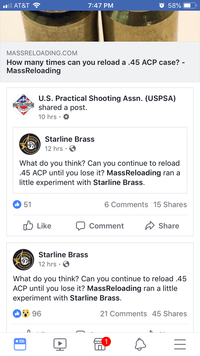bgoum
NES Member
Kudos to Eddie Coyle!
Great article Jim...very informative on the 45 ACP.... I pick up great information every time I read one of your articles. Great stuff
http://goal.org/newspaper/GOAL-June2016.pdf
Great article Jim...very informative on the 45 ACP.... I pick up great information every time I read one of your articles. Great stuff
http://goal.org/newspaper/GOAL-June2016.pdf

![Thumbs Up [thumbsup] [thumbsup]](/xen/styles/default/xenforo/smilies.vb/044.gif)
![Wink [wink] [wink]](/xen/styles/default/xenforo/smilies.vb/002.gif)
![Laugh [laugh] [laugh]](/xen/styles/default/xenforo/smilies.vb/012.gif) . I'm sure you're really lacking brass.....
. I'm sure you're really lacking brass.....